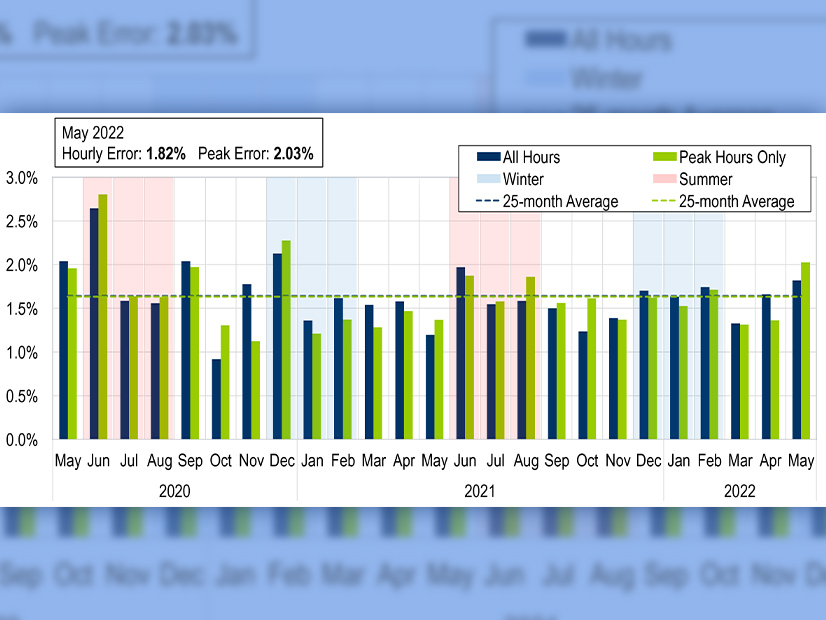
Internal NITS Process
PJM’s Susan McGill last week reviewed a proposed issue charge and problem statement to improve processes for scheduling internal network integration transmission service (NITS).
The RTO said its current tariff makes little distinction between internal and external service requests, requiring all requests be studied to ensure sufficient headroom or need for system upgrades. Internal requests are for internal generation serving internal load; external/cross-border requests refer to external generation serving internal load or internal generation serving external load, respectively.
The initiative seeks to revise the tariff and manual language to differentiate between the two types of requests and reduce administrative burdens on entities using internal service.
The problem statement says the current tariff sets out the process for renewing cross-border service but is “not applicable to internal service requests because the internal generation and load served through internal service are already evaluated and maintained in the existing models used for studies under the Regional Transmission Expansion Process (RTEP).”
The current tariff “requires start and end date durations, creating additional administration burdens to ensure timely rollover rights for internal NITS.”
The issue charge proposes to make the following issues out of scope: border service processes associated with NITS; the RTEP process; the pseudo-tie request process; transmission service rates; and the process to integrate new service territory into PJM.
The committee will be asked to approve the issue charge at its next meeting.
‘Maximum Emergency’ Generation
Members heard a first read of PJM’s Package A, a collection of proposed manual changes addressing maximum generation status.
In response to concerns over fuel and emissions, PJM made a change last year to section 6.4 of Manual 13 to temporarily modify the remaining hours under which a resource may be offered as “maximum emergency generation.” The change, which members endorsed in October, allowed PJM to request resource owners move fuel- or emissions-limited steam units into the “maximum emergency” category if the resource’s remaining run hours fall below 240 hours (10 days), an increase from the manual’s original remaining run time of 32 hours. Unless required to meet local or regional reliability needs, the units would be restricted from operating during that status, unless their inventory rose above 21 days (504 hours).
The change set out similar rules for combustion turbines, except that they could be moved into maximum emergency status when their remaining run hours on all fuel types fall, or are expected to fall, below 24 hours, versus 16 hours in the original language.
The modifications had an expiration date of April 1, 2022, but the Markets and Reliability Committee eliminated the deadline in March to allow work on a permanent solution. The MRC also approved a problem statement and issue charge. (See “Max Emergency Changes Endorsed,” PJM MRC/MC Briefs: March 23, 2022.)
Changes to Deactivation Notification Requirements
PJM reviewed “quick fix” changes to Manual 14D: Generator Operational Requirements regarding the deactivation analysis timeline.
Current rules require notification of PJM at least 90 days in advance of the planned deactivation.
Under the changes, desired deactivation date would be no earlier than:
- July 1 of the current calendar year for notices received between Jan. 1 and March 31;
- Oct. 1 of the current calendar year for notices received between April 1 and June 30;
- Jan. 1 of the following calendar year for notices received between July 1 and Sept. 30; and
- April 1 of the following calendar year for notices received between Oct. 1 and Dec. 31.
PJM will study deactivations four times per year for all notices received prior to the study commencement dates (Jan. 1, April 1, July 1 and Oct. 1).
Deactivation notifications would only require good-faith estimates for a time period if the generation owner requests to mothball the unit.
PJM will notify generation owners by the end of February, May, August and September, respectively, on the results of their reliability analyses.
The committee will be asked to endorse these changes at its next meeting.
Operating Metrics for May
PJM reported an average load forecast error of 1.82% in May, with a peak hours error of 2.03%, both above the 25-month average, according to the RTO’s operating metrics.
The RTO continued its unblemished record in 2022 of exceeding its 99% balancing authority area control error limit (BAAL) goal, scoring a 99.8% in May, with 55 excursions totaling 88 minutes outside of limits.
There were four spinning events, three reserve sharing events with the Northeast Power Coordinating Council, 24 post-contingency local load relief warnings and four hot weather alerts.

